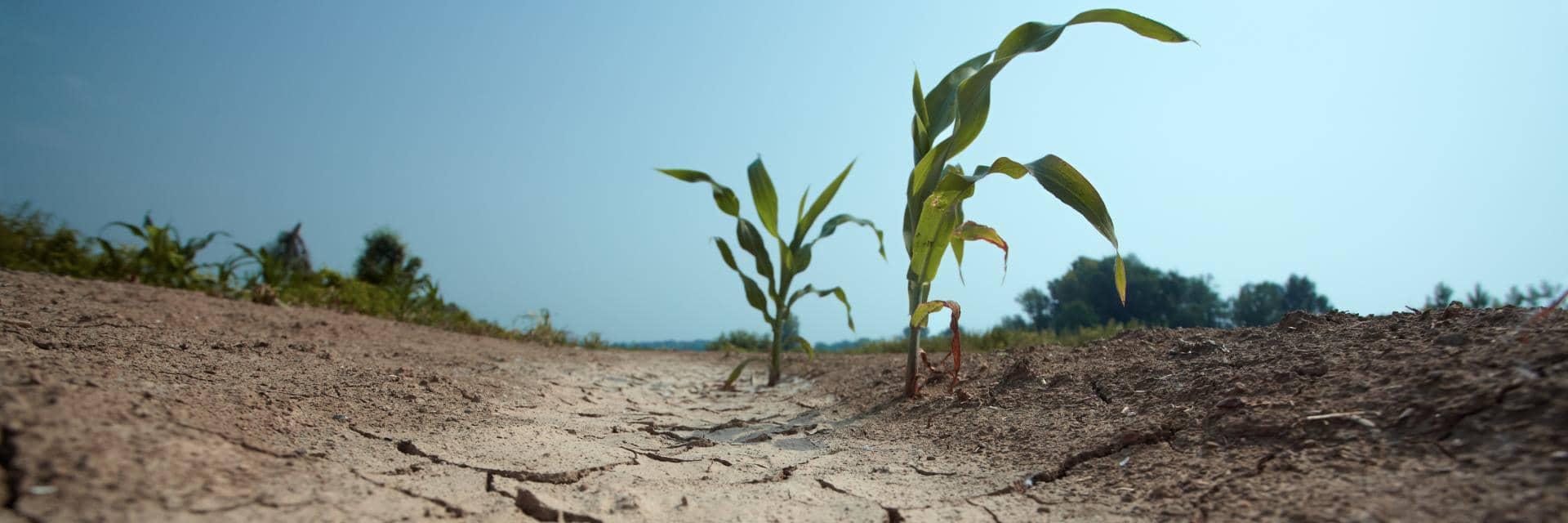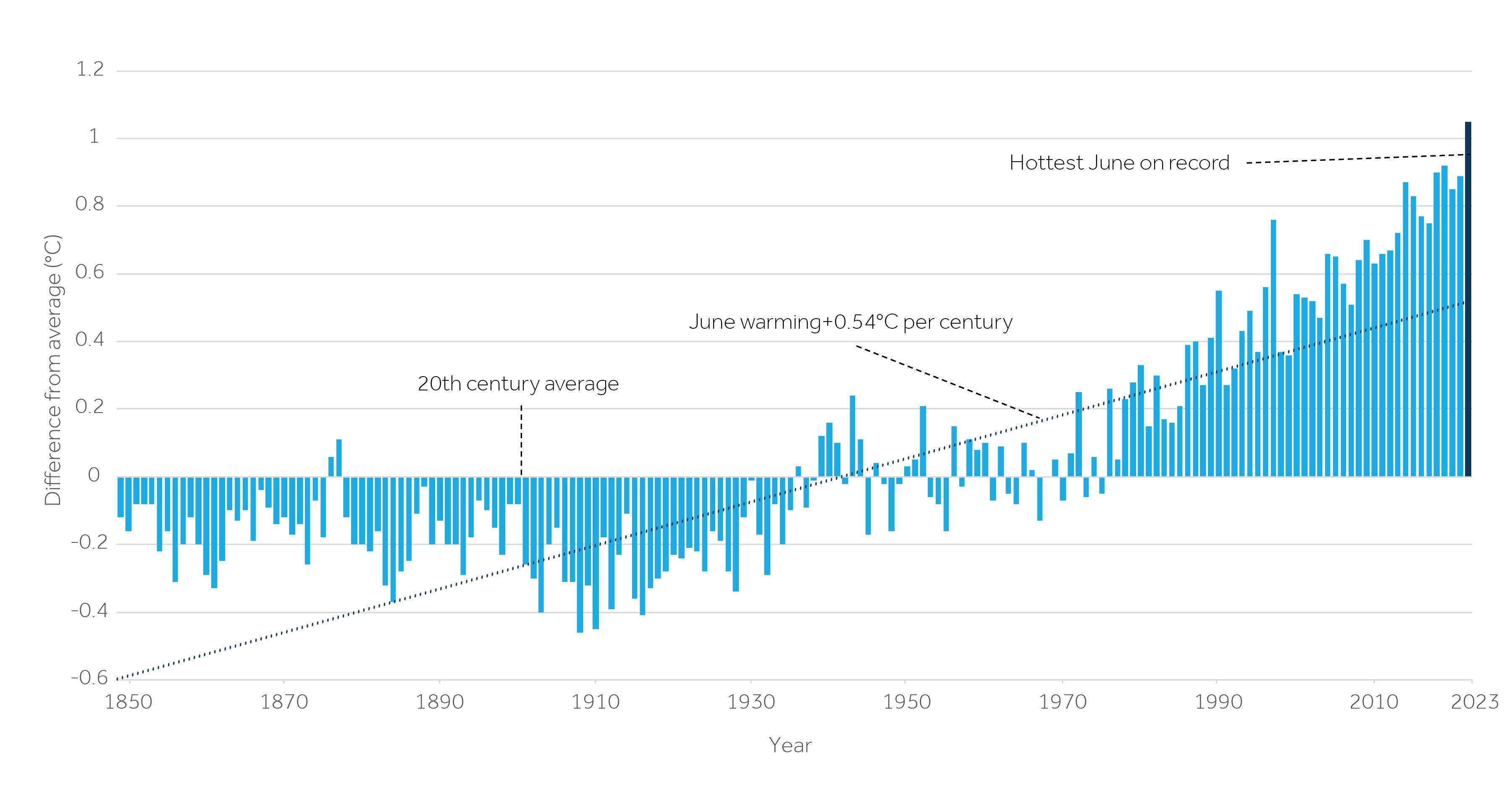Climate change: entering a new phase?
While the above examples of the effects of climate change are disturbing, it’s still an incomplete catalogue of events around the world this summer; or even since the start of 2023.
More unnerving is that the latest records follow last year’s global average temperature being only 1.16°C degrees above the pre-industrial baseline. In other words, the latest string of weather-related records, and costs, has occurred well shy of the 1.5°C global-warming target, or well below the 2.0°C objective of the Paris Agreement, let alone the 2.7°C of warming that current policies and action implies.
While largely expected at some point, many climate scientists have been surprised by their magnitude. Or, as United Nations Secretary General has summarised, these indicators show that Earth has passed from a warming phase into an “era of global boiling”.
Given the continued rate of new emissions added to the stock already in the atmosphere, researchers have calculated that now there’s a 66% chance we will exceed the 1.5°C warming threshold between now and 2027.
The longer the Earth’s average temperature is above this threshold, the physical impacts are expected to be more frequent, intense, and severe.
Speed of climate impact takes experts by surprise
The difference between what current trends in climate change, and those that were expected, suggests the speed of warming has been underestimated.
As one scientist studying melting sea-ice articulated: "I think this has taken us by surprise in terms of the speed of which has happened. It's definitely not the best-case scenario that we were looking at – it's closer to the worst case.”
What does this mean for investors?
For investors, this provokes a question. If climate impact scenarios are optimistic, what does this mean for climate-based financial models? And what about the ramifications on economic and financial expectations?
Many climate economic models focus on the effects of climate change as predicted at the end of this century or beyond. Like most financial modelling, historical data and consensus forecasts are used for the rates of change, to extrapolate future scenarios.
When extended across decades, it means that climate impact may appear marginal on economies and financial assets. Often this results in a few basis points of lost economic growth, as measured by gross domestic product.
But what if these models haven’t fully integrated climate science? And moreover, what if climate change is more pronounced, or is happening faster, than even current climate science has predicted?
Dangers of modelling errors
The result would be a significant under-pricing of the systemic risks that investors now face. This is the conclusion of a report from think tank Carbon Tracker, published in July, that “economic research…ignores critical scientific evidence about the financial risks within a rapidly changing climate.” This is primarily due to climate change economics papers being refereed by economists who may not have necessary domain knowledge to confirm the scientific basis for associated modelling.
Unfortunately, this would not be the first time that mainstream economic models have been inaccurate. For instance, in the lead up the global financial crisis in 2008, the dominant thinking did not include elements and warnings from alternative models that ultimately proved very costly.
Overcoming a bias towards inaction
Investors should be concerned about portfolio exposure to the inherent and uncertain risks of climate change. Like all risks, they face a choice – continue to maintain current positioning or to take action either to mitigate the risks or address their root causes.
From a behavioural finance perspective, investors may fall victim to a status quo bias – to continue with their existing investment approach rather than make a change, especially given the complexity of climate change.
As most narratives around climate change focus on future years, or even decades, it can appear sensible to wait to act. However, with the physical impacts of global warming occurring earlier than many expected and questions raised about climate financial models, this may not be a prudent course.
Given wealth preservation is a fundamental priority of most investors, taking action now to, at a minimum, understand these risks would be a sensible course.
In Could your investments go up in smoke? we outlined how the physical risks of climate change can affect your investments. We also explained how investors can consider both primary physical risks (direct damage to assets as land, buildings, stock and infrastructure) and secondary physical risks arise as climate change generates more indirect risks (which affect supply chains and extended value chains).
While the principles of that article remain, promisingly, the field has progressed so that more detailed frameworks, data and tools are available for investors. Behaving cautiously now, to understand and mitigate risks, and moreover support solutions to climate change, will enable portfolios to be positioned for unknown and potentially undiversifiable climate risks.
Small changes lead to big results
Humanity took nearly one hundred years to get from Arrhenius’ initial theory on the influence of carbon-dioxide emissions on the climate, to the first global agreement for collective action via the United Nations Framework Convention on Climate Change (UNFCCC). Nearly thirty years have elapsed since that point. With environmental records and warnings from nature emerging at pace all around us, it may be easy to become disillusioned.
Rather than discourage action, as climate ’doomers’ would advocate, these should be seen as valuable warnings. They illustrate the potential for a different outcome – if we make changes to the system and our contribution.
Like the effects of compounding, even small actions when scaled can lead to big change. Once the summer holiday is over, investors should consider how best to use the new season to begin tackling climate-change risks in their portfolio.


